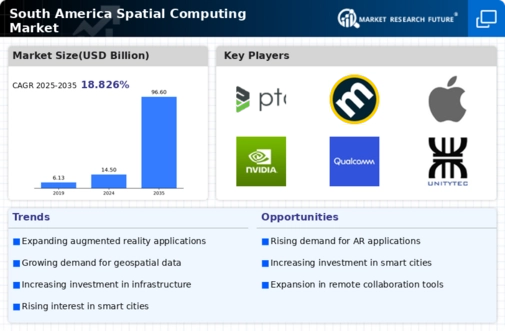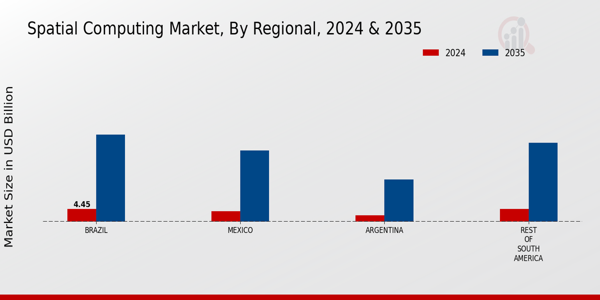South America Spatial Computing Market Summary
The South America Spatial Computing market is projected to grow from 14.5 USD Billion in 2024 to 96.6 USD Billion by 2035, indicating robust expansion.
Key Market Trends & Highlights
South America Spatial Computing Key Trends and Highlights
- The South America Spatial Computing market is valued at 14.5 USD Billion in 2024.
- By 2035, the market is expected to reach 96.6 USD Billion, reflecting substantial growth.
- The market is anticipated to experience a compound annual growth rate of 18.83 percent from 2025 to 2035.
- Growing adoption of spatial computing technologies due to increasing demand for enhanced data visualization is a major market driver.
Market Size & Forecast
| 2024 Market Size | 14.5 (USD Billion) |
| 2035 Market Size | 96.6 (USD Billion) |
| CAGR (2025-2035) | 18.83% |
Major Players
PTC, Meta, Apple, NVIDIA, Qualcomm, Unity Technologies, Google, Accenture, Amazon, SAP, Autodesk, Cisco, Epic Games, Microsoft















